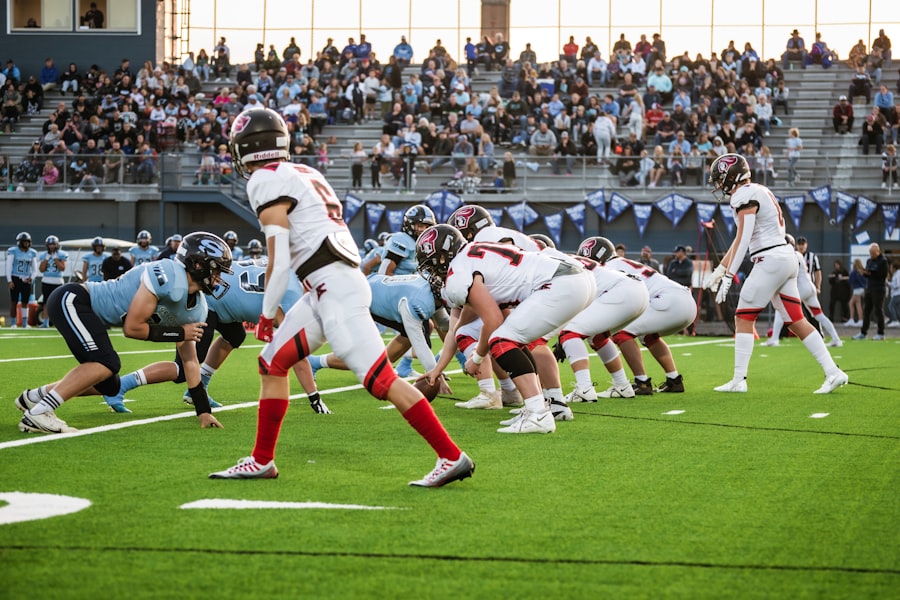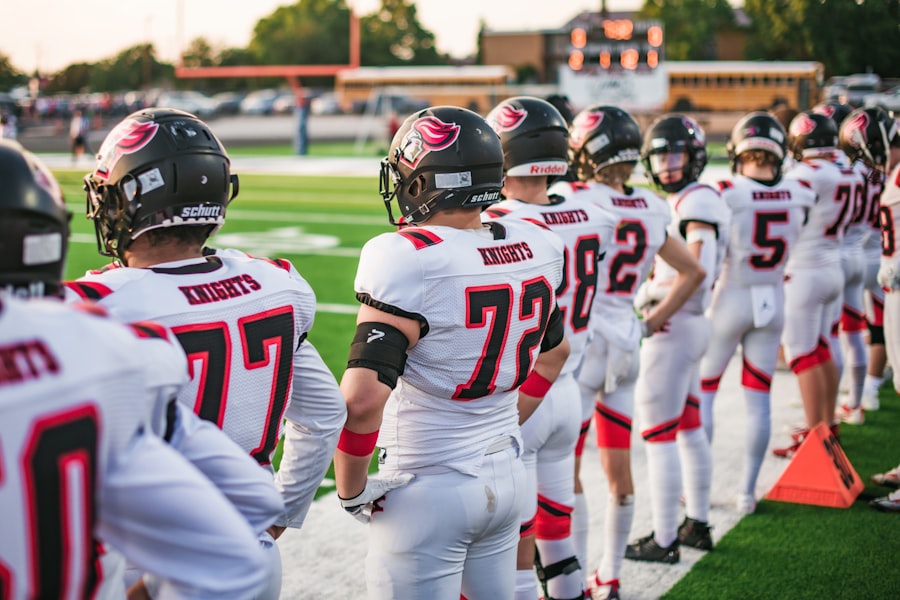The National Basketball Association (NBA) has long been a pioneer in the realm of sports marketing and branding. In recent years, the introduction of jersey ads has marked a significant evolution in how teams generate revenue and engage with fans. The decision to allow advertisements on player jerseys, which was officially implemented in the 2017-2018 season, has transformed the visual landscape of the game.
This move not only reflects the changing dynamics of sports sponsorship but also highlights the increasing importance of commercial partnerships in professional athletics. As teams seek new avenues for revenue generation, jersey ads have emerged as a prominent feature, blending the worlds of sports and advertising in unprecedented ways. The integration of jersey ads into the NBA has sparked a variety of discussions among stakeholders, including team owners, players, and fans.
While some view this development as a natural progression in the commercialization of sports, others express concerns about its implications for the integrity of the game. The presence of corporate logos on jerseys raises questions about the balance between sport and commerce, as well as the potential impact on fan experience. As the NBA continues to navigate this new terrain, understanding the historical context, financial implications, and societal reactions to jersey ads becomes essential for grasping their significance in modern basketball.
Key Takeaways
- NBA jersey ads mark a new revenue stream for the league and teams.
- Jersey advertising has a long history in various sports before the NBA adopted it.
- Sponsorship deals from jersey ads significantly boost NBA financial earnings.
- Jersey ads face criticism from fans and players concerned about tradition and aesthetics.
- The future of NBA jersey ads may involve expanded placements and increased brand partnerships.
History of Jersey Ads in Sports
The concept of jersey advertising is not new; it has roots that extend back several decades across various sports. In soccer, for instance, jersey sponsorships have been commonplace since the 1970s, with clubs like Liverpool FC and Manchester United leading the way in monetizing their uniforms through corporate partnerships. The success of these initiatives in soccer laid a foundation for other sports leagues to explore similar opportunities.
In North America, however, the adoption of jersey ads has been more gradual, with leagues like Major League Baseball and the National Football League historically resisting such commercialization. The NBA’s decision to embrace jersey ads can be traced back to a broader trend in sports marketing that gained momentum in the early 21st century. As television contracts and media rights deals skyrocketed, teams began to seek additional revenue streams to complement their existing income sources.
The NBA’s global reach and popularity made it an attractive platform for advertisers looking to connect with a diverse audience. By allowing teams to display corporate logos on jerseys, the league opened up a new frontier for sponsorship opportunities that could enhance financial stability while also providing brands with valuable exposure.
Impact on NBA Revenue

The introduction of jersey ads has had a profound impact on NBA revenue streams. Teams have reported significant financial gains from these partnerships, with some franchises securing multi-million dollar deals with prominent brands. For example, the Philadelphia 76ers signed a deal with StubHub worth approximately $15 million over three years, while the Boston Celtics partnered with General Electric for a similar amount.
These lucrative agreements not only bolster team finances but also contribute to the overall economic health of the league. Moreover, jersey ads have allowed teams to diversify their revenue sources beyond traditional ticket sales and merchandise. As franchises increasingly rely on corporate partnerships to fund operations and player salaries, jersey ads represent a strategic move toward financial sustainability.
The NBA’s ability to attract high-profile sponsors reflects its status as a premier sports league and underscores the potential for continued growth in this area. As teams become more adept at leveraging their brand equity through jersey advertising, it is likely that we will see even more innovative partnerships emerge in the coming years.
Criticisms and Controversies Surrounding Jersey Ads
| Aspect | Details | Impact | Response |
|---|---|---|---|
| Misleading Claims | Advertisements often exaggerated the benefits of wearing certain jerseys, implying performance enhancement. | Consumer distrust and complaints to advertising standards authorities. | Some companies issued clarifications and revised ad content to be more accurate. |
| Stereotyping | Ads sometimes portrayed athletes or fans in stereotypical or culturally insensitive ways. | Public backlash and calls for more inclusive marketing practices. | Brands adopted diversity guidelines and consulted cultural experts. |
| Environmental Concerns | Promotion of fast fashion jerseys contributed to increased textile waste and environmental impact. | Negative media coverage and consumer boycotts. | Some brands introduced sustainable materials and recycling programs. |
| Pricing Transparency | Ads sometimes failed to clearly disclose additional costs such as shipping or customization fees. | Customer dissatisfaction and regulatory scrutiny. | Improved pricing disclosures and clearer terms in advertisements. |
| Use of Celebrity Endorsements | Some endorsements were criticized for being misleading or for celebrities not genuinely using the products. | Damage to brand credibility and legal challenges. | Brands increased transparency about endorsement agreements. |
Despite the financial benefits associated with jersey ads, there are notable criticisms and controversies surrounding their implementation in the NBOne primary concern is the potential dilution of team identity and tradition. Fans often have strong emotional connections to their teams, and the presence of corporate logos on jerseys can be perceived as a departure from the authenticity of the sport. Critics argue that this commercialization undermines the essence of basketball as a game rooted in competition rather than consumerism.
Additionally, there are worries about how jersey ads may affect the viewing experience for fans. The visual clutter created by multiple logos can detract from the aesthetic appeal of jerseys, leading some supporters to feel that their favorite teams are becoming mere billboards for corporate interests. This sentiment is particularly pronounced among long-time fans who cherish the history and heritage associated with their teams’ uniforms.
As discussions around these issues continue, it is clear that finding a balance between commercial interests and preserving team identity will be crucial for the NBA moving forward.
Brands and Sponsorship Deals in the NBA
The landscape of brands and sponsorship deals within the NBA is diverse and dynamic. Major corporations from various industries have seized the opportunity to align themselves with one of the most popular sports leagues globally. From technology giants like Rakuten, which sponsors the Golden State Warriors, to automotive companies like Kia, which has partnered with multiple teams, brands are eager to leverage the NBA’s extensive reach to connect with consumers.
These sponsorship deals often extend beyond mere logo placement on jerseys; they encompass comprehensive marketing campaigns that include digital advertising, social media engagement, and community outreach initiatives. For instance, when the Los Angeles Lakers entered into a partnership with Wish, an e-commerce platform, it was not just about having their logo on Lakers jerseys; it involved collaborative efforts to engage fans through interactive experiences and exclusive merchandise offerings. Such multifaceted partnerships illustrate how brands are increasingly looking for ways to create meaningful connections with fans while maximizing their visibility within the league.
Player and Fan Reactions to Jersey Ads

Reactions from players regarding jersey ads have been mixed. Some players appreciate the additional revenue generated by these sponsorships, recognizing that they can lead to higher salaries and improved team resources. Others express concerns about how these ads may alter public perception or distract from their performance on the court.
For instance, players like LeBron James have acknowledged that while they understand the financial necessity behind jersey ads, they also hope that such changes do not overshadow the sport itself. Fan reactions have been equally varied. While some fans embrace jersey ads as a sign of progress and modernization within the league, others lament what they perceive as a loss of authenticity.
Social media platforms have become battlegrounds for these discussions, with fans voicing their opinions on everything from specific logos to broader concerns about commercialization in sports. The debate often centers around whether jersey ads enhance or detract from the overall experience of being a fan—an issue that continues to evolve as more teams adopt this practice.
Future of Jersey Ads in the NBA
Looking ahead, the future of jersey ads in the NBA appears promising yet complex. As teams continue to explore innovative ways to monetize their brand equity, it is likely that we will see an expansion of jersey advertising beyond traditional placements. For example, augmented reality (AR) technology could enable dynamic advertisements that change during games or special events, creating an interactive experience for fans both in arenas and at home.
Moreover, as consumer preferences shift toward sustainability and social responsibility, brands may seek partnerships that align with these values. This could lead to more collaborations focused on community engagement or environmental initiatives—an evolution that would resonate positively with fans who prioritize corporate social responsibility. The NBA’s ability to adapt to these trends while maintaining its core identity will be crucial in shaping how jersey ads are perceived in the future.
Comparisons to Other Sports Leagues with Jersey Ads
When comparing the NBA’s approach to jersey ads with other sports leagues worldwide, notable differences emerge. In European soccer leagues, for instance, jersey sponsorships are deeply entrenched in club culture and often feature prominently on uniforms without significant backlash from fans. This acceptance contrasts sharply with some segments of American sports culture, where traditional values around team identity may lead to resistance against similar practices.
In contrast, leagues like Major League Soccer (MLS) have embraced jersey ads more readily than their counterparts in American football or baseball. The MLS has seen substantial growth through its partnerships with various brands, demonstrating how effective marketing strategies can enhance both league visibility and team revenues. As other leagues observe the NBA’s experiences with jersey ads—both positive and negative—they may adapt their own strategies accordingly, leading to an evolving landscape of sports marketing across different platforms.
In conclusion, while jersey ads have become an integral part of the NBA’s commercial strategy, they also raise important questions about identity, tradition, and fan engagement within professional sports. As this trend continues to develop, it will be essential for all stakeholders—teams, players, brands, and fans—to navigate these changes thoughtfully and collaboratively.



